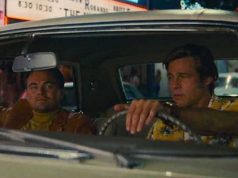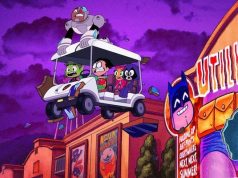I gather that a reading of Laurence Sterne’s 18th-century novel “The Life and Opinions of Tristram Shandy, Gentleman” might enhance one’s perception of the film version, which is called “Tristram Shandy: A Cock and Bull Story.” However, not having read the book, and feeling confident that most viewers have not read it either, I offer this assurance: The movie is a self-referential, keenly absurd comedy with several layers of humor. Reading the novel might help you get at some of the deeper layers, but the top few are accessible to anyone.
The novel itself is rendered more or less unfilmable by its wandering, stream-of-consciousness narration and near absence of plot. The main character starts out telling us about his conception and birth, then gets so distracted by tangents and afterthoughts that by the time the novel ends, he’s just barely been born.
The movie meanders in the same way. Just as the novel is partly about the author’s attempts to write the novel, the movie is about some people’s attempts to make the movie. Comparisons to “Adaptation” are highly appropriate.
We begin with Steve Coogan and Rob Brydon in the makeup room, preparing for their scenes. Coogan will play Tristram Shandy as well as Tristram’s father Walter; Brydon plays Walter’s brother Toby. Coogan is the star, but Brydon wants to be billed as a co-star rather than a supporting actor. Throughout the film — the film we’re watching, I mean, not the film they’re making — Coogan is paranoid about Brydon’s attempts to gain more status, going so far as to insist that Brydon’s shoes have their heels sawed off so that he won’t appear taller than Coogan.
The fact that Brydon is fond of doing a vocal impersonation of Coogan to the amusement of the other cast members does not help their relationship any.
The film then sets out to show Tristram Shandy’s birth, narrated by Tristram, who, as in the novel, becomes distracted by other things. He wants to tell us about his father and mother’s opposing views on childbirth, for example (doctor vs. midwife), and on the doctor’s exciting new medical instrument known as “forceps.”
It is during that childbirth scene that the cameras pull back to reveal … cameras. Cameras, sound guys, tech crew and a director, Mark (Jeremy Northam), a surrogate for the film’s real director, Michael Winterbottom. (Why didn’t Winterbottom appear as himself?) We’ve been watching the filming of a movie, we realize.
Coogan and the other actors take a break, and the rest of the film follows a beleaguered Coogan as he hustles to script meetings, to interludes with his girlfriend Jenny (Kelly Macdonald), to costume fittings, to interviews with members of the press. Coogan hasn’t actually read “The Life and Opinions of Tristram Shandy, Gentleman,” but he’s picked up enough jargon to tell an interviewer that it was “postmodern before there was any modern to be post about.”
That makes the film postmodern, too, and Winterbottom has toyed with this kind of fractured storytelling before, notably in “24 Hour Party People.” That film, about the New Wave pop music of the 1970s and ’80s, also had Coogan in the leading role as a protagonist and talk-to-the-camera narrator who sometimes gets ahead of himself and sometimes forgets to tell us things. (The real-life person Coogan was playing, record exec Tony Wilson, has a brief cameo in “Tristram Shandy.”)
The screenplay is attributed to Martin Hardy, a pseudonym for Winterbottom’s long-time collaborator Frank Cottrell Boyce, who felt that since so much of the dialogue was improvised, he shouldn’t take full credit for the script under his own name. Coogan and Brydon do most of the imrovising, it seems; both British comics, they have often worked together before and have an easy chemistry. While in character, they regularly insult each other in a most amusing, most British fashion, and they engage in dueling Al Pacino impressions over the closing credits. What that has to do with Tristram Shandy, I have no idea.
Coogan is a brilliant comedian, under-appreciated in America but highly prized in England. The version of himself that he plays here is arrogant and ornery, masked by a false layer of humility and friendliness. He’s the sort of character you would hate in real life but love to watch in a movie, where people other than yourself are the recipients of his scorn.
But the entire ensemble is good, including Naomie Harris as Coogan’s long-suffering assistant, Gillian Anderson as herself (flown in at the last minute to play a character who had been removed from the adaptation and has now been put back in), and Ian Hart as the film-within-a-film’s writer.
Winterbottom has achieved a Robert Altman kind of feel, with a large ensemble of characters talking over each other as the camera floats around unobtrusively. Parallels between the Tristram Shandy story and the present-day one emerge subtly, and the hassles of filmmaking are slyly and often hilariously addressed. I love the scene where cast members gather to watch footage from their movie and ruthlessly mock it, “Mystery Science Theater”-style (complete with their silhouettes against the screen, in some shots).
In fact, “Tristram Shandy: A Cock and Bull Story” comments on its own editing, adaptation and casting — indeed, on its very existence — right up to the end. It’s a movie about the making of a movie about a book that’s about the writing of a book. It’s extremely unfaithful to the content of the novel, obviously (since the novel wasn’t about making a movie), but very loyal to its deconstructionist, anything-goes spirit. I bet Laurence Sterne would be pleased with the film. Maybe someday I’ll get around to reading his book.
A- (1 hr., 34 min.; )





